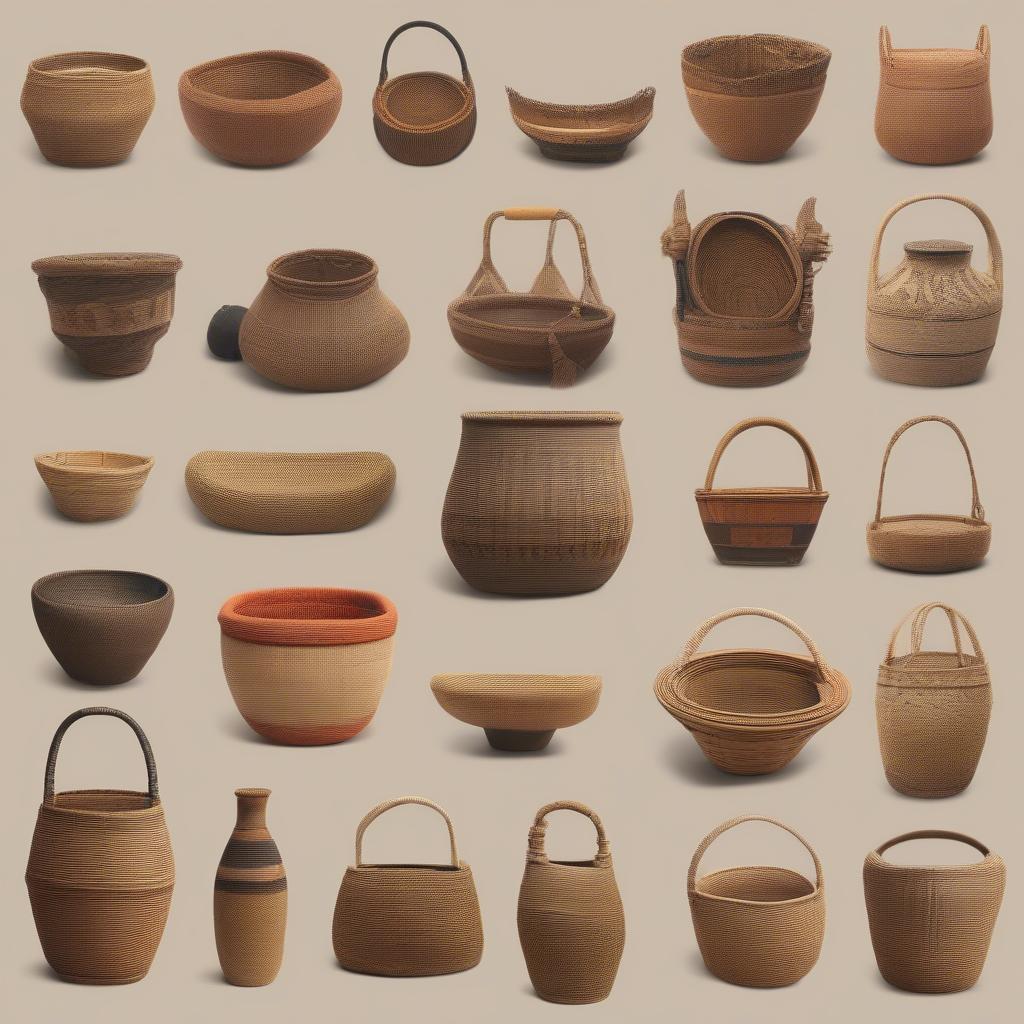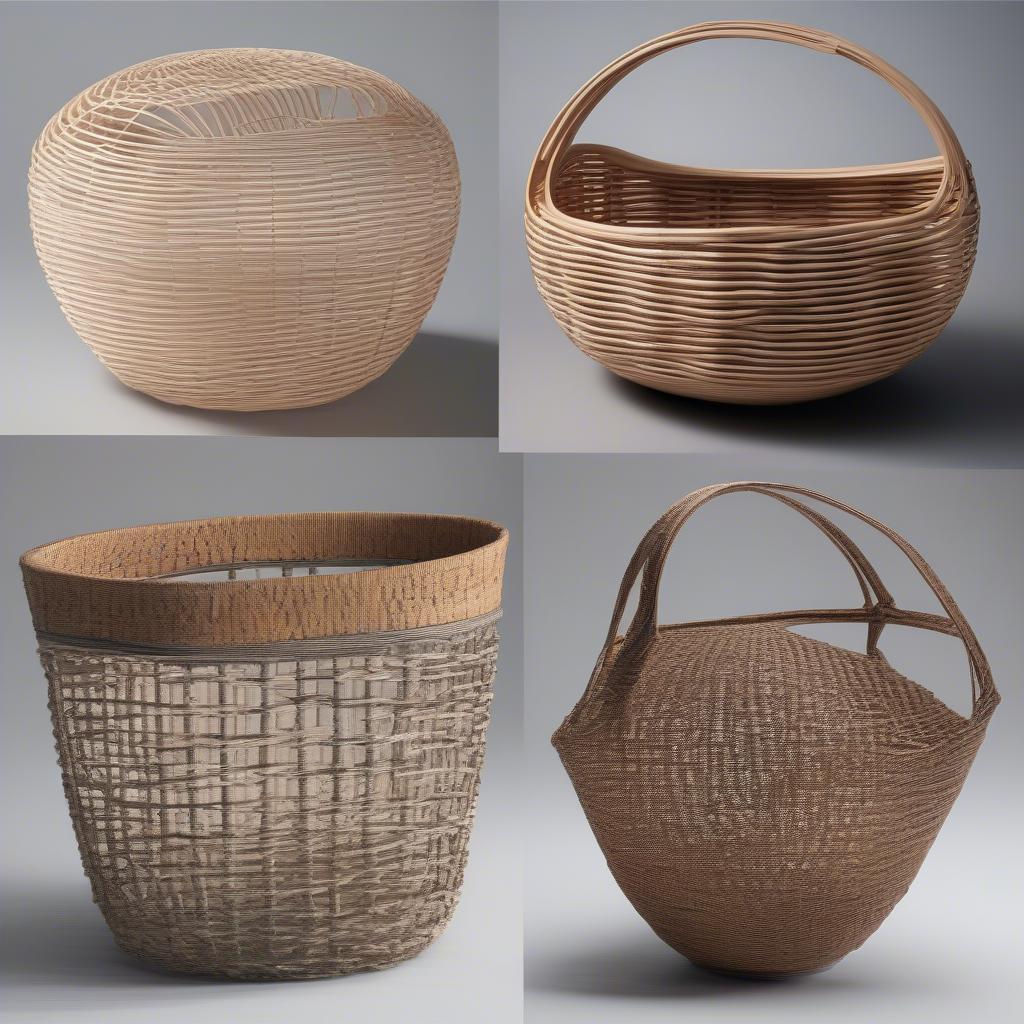Basket Weaving
Exploring Basket Weaving Cultures
Basket Weaving Cultures are a testament to human ingenuity and creativity, transforming readily available natural materials into functional and beautiful objects. From ancient traditions passed down through generations to contemporary artistic expressions, basket weaving reflects a deep connection between people and their environment. This article will delve into the rich tapestry of basket weaving traditions across the globe, exploring their unique characteristics, materials, and cultural significance.  Basket Weaving Traditions Around the World
Basket Weaving Traditions Around the World
A World Woven Together: The History and Significance of Basket Weaving
Basketry is one of humanity’s oldest crafts, predating pottery and even weaving cloth. Evidence suggests that baskets were crafted thousands of years ago, serving essential roles in daily life. They were used for storage, transportation, fishing, and even as cradles. basket-weave appearance on em These early baskets weren’t just functional; they often held symbolic meaning, reflecting the beliefs and values of the communities that created them. The intricate patterns and designs woven into each basket tell stories of cultural identity, spirituality, and connection to the natural world.
The Diversity of Materials: From Wicker to Rattan and Beyond
Different cultures have utilized the materials available in their local environments, showcasing the adaptability of basket weaving techniques. Wicker, referring to the process of weaving rather than a specific material, often involves pliable plant materials like willow, reeds, and bamboo.  Wicker and Rattan Basket Materials Rattan, a strong and flexible vine, is another popular choice, especially in Southeast Asia, known for its durability and intricate weaving possibilities. Other materials, such as grasses, barks, and even pine needles, contribute to the diverse world of basketry.
Wicker and Rattan Basket Materials Rattan, a strong and flexible vine, is another popular choice, especially in Southeast Asia, known for its durability and intricate weaving possibilities. Other materials, such as grasses, barks, and even pine needles, contribute to the diverse world of basketry.
Basket Weaving in Specific Cultures: A Closer Look
From the intricate coiled baskets of Native American tribes to the vibrant patterns of African basketry, each culture has developed distinct styles and techniques. Japanese basket weaving, for example, emphasizes precise craftsmanship and minimalist aesthetics, while 2 2 plain basket weave structure is prevalent in many cultures. The use of color, the types of weaves, and the shapes of the baskets all contribute to the unique cultural identity reflected in each piece.
How Basket Weaving is Preserved and Adapted Today
In many communities, basket weaving skills are passed down through generations, ensuring the continuation of these rich traditions. However, globalization and changing lifestyles have presented challenges. Many artisans are finding innovative ways to adapt, incorporating new materials and designs while staying true to their cultural roots. Basket weaving is experiencing a resurgence in popularity, with contemporary artists pushing the boundaries of the craft, exploring new forms and expressions.
“Basket weaving is more than just a craft; it’s a living tradition that connects us to our ancestors and the natural world,” shares renowned basket weaver, Anya Sharma, from India.
The Future of Basket Weaving: A Sustainable Craft
Basket weaving, with its focus on natural materials and handcrafted techniques, offers a sustainable alternative to mass-produced goods. basket weave electron microscopy alport In a world increasingly concerned about environmental impact, the appreciation for handcrafted, sustainable items is growing. This renewed interest provides opportunities for basket weavers to share their skills and create beautiful, functional objects that honor both tradition and sustainability.
“The beauty of basket weaving lies in its simplicity and its connection to nature,” adds Kenji Tanaka, a master Japanese basket weaver. “Each basket tells a story, not just of the weaver, but of the materials themselves.”
 Contemporary Basket Weaving Designs
Contemporary Basket Weaving Designs
Conclusion
Basket weaving cultures represent a vital part of human heritage, showcasing the creativity and resourcefulness of people across the globe. From ancient traditions to contemporary innovations, the art of basket weaving continues to thrive, connecting us to the natural world and the rich tapestry of human cultures. alport syndrome electron microscopy basket-weave Exploring these diverse basket weaving cultures provides a deeper understanding of human ingenuity and the enduring power of tradition.
FAQ
-
What is the difference between wicker and rattan?
-
What are some common basket weaving techniques?
-
How can I learn basket weaving?
-
Where can I buy authentic handcrafted baskets?
-
What are the benefits of using natural materials in basketry?
-
How can I care for my baskets?
-
Are there any online resources for learning about basket weaving cultures?
For further assistance, please contact our Hotline: +84 388 951 999, or visit our offices at Hanoi, Vietnam or Tech Avenue, Suite 12, San Francisco, CA 94105, USA. We have a 24/7 customer service team available to help.
